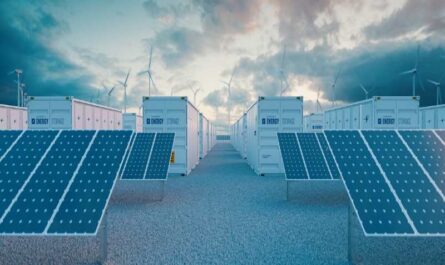
What is a Solid State Drive (SSD)?
A solid state drive, also known as an SSD, is a data storage device that uses flash memory instead of a spinning metal platter to store information. Unlike traditional hard disk drives (HDDs) that have moving parts, SSDs have no moving components which makes them more durable and faster than HDDs. SSDs work by storing data on flash memory chips in the form of electrical charge similar to how USB flash drives and memory cards store data.
Advantages of SSDs Over HDDs
Speed
One of the key advantages of SSDs is their faster read and write speeds compared to HDDs. Since SSDs have no moving parts, they can access and transfer data much quicker than HDDs that need to physically locate and move to the correct position on the disk platters. Typical SSD read/write speeds are in the range of 500 MB/s to 550 MB/s which is several times faster than hard drives that usually have read/write speeds of around 100-150 MB/s. This speed increase means faster boot times for the operating system and applications as well as improved overall system responsiveness.
Reliability
SSDs are generally more reliable than HDDs due to their lack of fragile moving parts. HDDs are more susceptible to physical damage from shocks or vibrations as they have platters and read/write heads that can get damaged easily. SSDs are not affected by physical shocks and vibrations as there are no moving parts. This also means SSDs have lower failure rates compared to HDDs that often fail due to wear and tear on the internal read/write components over time from continuous movement.
Durability
Since SSDs do not have any moving parts, they are more durable than HDDs. SSDs can withstand more shocks and vibrations without data loss or internal damage. HDDs are fragile in terms of handling damage from falls or bumps that can potentially damage the spinning platters and other delicate internal components. SSDs can also withstand wider range of operating temperatures as compared to HDDs. This durability makes SSDs a good choice for uses cases involving frequent movement like laptops, tablets etc.
Types of SSDs
There are different types of SSDs available in the market based on interface used and form factor. Some common types are:
SATA SSDs – Most common type which uses a traditional SATA interface to connect to the computer motherboard or laptop. They come in 2.5-inch form factor similar to HDDs. SATA SSDs are affordable but have lower sequential read/write speeds than other types.
M.2 or mSATA SSD – Very compact SSDs that can be directly installed onto the motherboard without any additional cables. Comes in M.2 or mSATA form factor and support either SATA or faster NVMe interface. Popular in slim laptops and high-end desktops.
PCIe or NVMe SSDs – Connect directly to the PCIe bus for maximum performance. Support NVMe protocol and have much higher sequential speeds than SATA SSDs. Typically used for professional applications, workstations, and high-end gaming systems. Come in M.2 or add-on card form factors.
Two main interfaces used in SSDs are SATA and NVMe. While SATA SSDs top out at around 550 MB/s speeds, NVMe SSDs can reach over 3500 MB/s sequential reads and 1900 MB/s writes on flagship models.
Factors to Consider When Buying an SSD
There are few important factors to consider when purchasing an SSD to get the best value and performance:
Storage Capacity – SSD storage capacities range from 128GB to multi-terabyte sizes. Consider how much free space you need after installing apps and files.
Form Factor – Check your computer’s slots and buy the right form factor SSD – 2.5 inch SATA, M.2, or PCIe add-on card.
Interface – SATA is more affordable but NVMe supports much faster speeds, future-proofing your investment.
Warranty – Look for 3 to 5 years warranty minimum from reputed brands like Samsung, WD, Crucial for peace of mind.
Endurance Ratings – Higher TBW ratings indicate longer sustained write performance over time in bytes terabytes can be written.
Price to Performance – Balance capacity, speeds and price to maximize value. Avoid lowest capacity or lowest performing budget drives.
With carefully considering storage needs and computer specifications, one can pick the ideal SSD to unleash blazing fast boot up and loading times as well as future-proof their system with ample storage space. Upgrading to an SSD brings a revitalizing speed boost to any computer.
Real-life Benefits of Using SSDs
Faster start-up: SSDs improve boot up and resume times significantly as the operating system files are accessed faster without latency from spinning disks. Popular Windows 10 computers boot in under 10 seconds with SSDs.
Responsiveness: Everything feels snappier from launching programs and files to in-app loading. Complex Adobe and gaming applications see major reductions in load waits. Web browsing is a far smoother experience.
Extended battery life: Laptops with SSDs have batteries that last longer because flash memory is more power efficient compared to mechanical HDDs. They also let laptops wake instantly from sleep versus seconds taken by hard drives.
Speedy upgrades: File transfers and backups to external drives are a whole lot quicker since SSDs max out USB port speeds with their high internal throughputs. Say goodbye to prolonged file operations.
Increased productivity: The tangible speed boost from an SSD decreases wait times and helps focus on creative work instead of twiddling thumbs. More tasks can be done faster with SSDs.
In conclusion, solid state drive have revolutionized digital storage by bringing silent yet lightning fast speeds to laptops and desktops. Their benefits in terms of reliability, durability and performance make SSDs the logical choice for any system upgrade. Combined with generous capacities and affordable prices, SSDs deliver robust value and a markedly improved user experience.
*Note:
1. Source: Coherent Market Insights, Public sources, Desk research
2. We have leveraged AI tools to mine information and compile it

